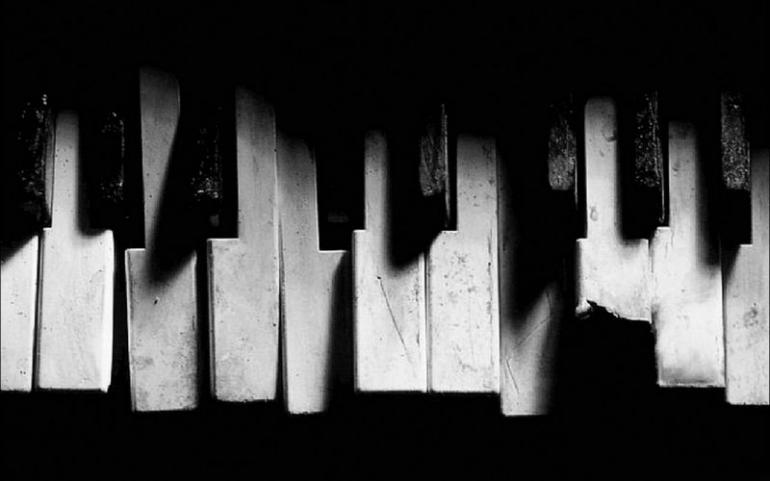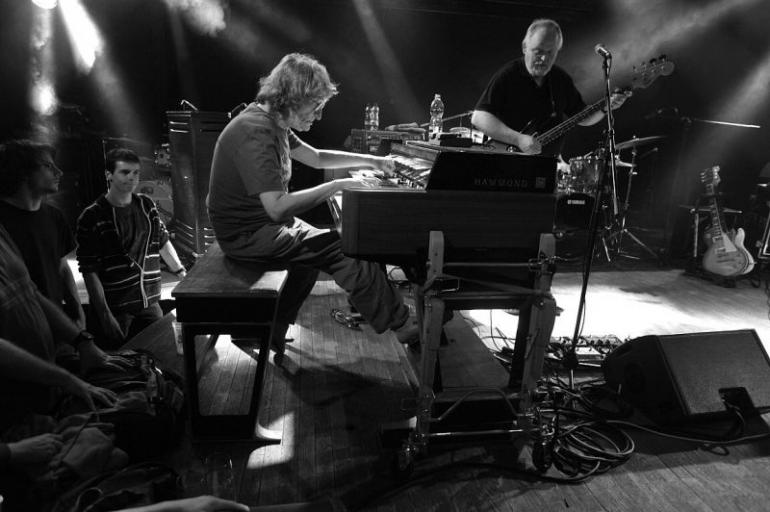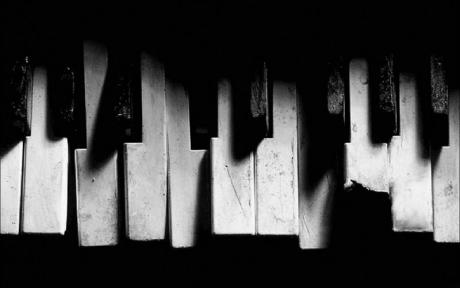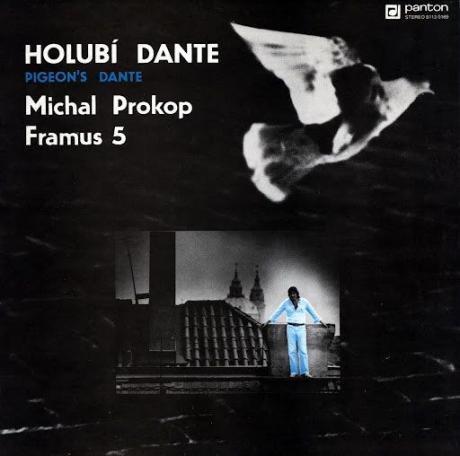Rockové klávesy - The Influence of Marián Varga

In my opinion, Konvergencie is best album of CM. Four sides of this double album are four sides of the same coin. These were the roads that we wanted to make as CM. It is a variant album with child choir, transformation of classic patterns, songs and also electronic improvisation music.
Marián Varga
The Influence of Marián Varga
This month I wanted to talk about my favorite Slovak keyboardist, Marián Varga. As a huge fan of Keith Emerson, Hammond organ, and progressive rock, I was so amazed when I came upon Varga’s music. Marián Varga (born January 29, 1947) grew up playing piano from the age of six at the conservatory in Bratislava. After three years he left school to become a member of the group, Prúdy. After this group, he formed the first Czechoslovak art rock band, Collegium Musicum. The repertoire of Collegium Musicum included reinterpretations of the themes from classical composers.
Haydn, Bartok, and Bach as well as incredible original compositions. When Collegium Musicum disbanded in 1979, Varga started a solo career and became a pioneer of free improvisation. In the meantime he continued to contribute to popular music. With Pavol Hammel he released five successful albums and the first rock musical in Slovakia.
Heavily inspired by The Nice and later Emerson, Lake and Palmer, Varga got the nick name “The Czechoslovakian Keith Emerson”. This is an over simplification of his playing though. Varga has more classical harmony and less bebop than Emerson. He also, in my opinion, had a greater variety of sounds from his organ than Emerson had. While Emerson was relying heavily on Moog synths and piano, Varga mostly stuck to organ. He also had a more gentle approach than Emerson. His solos are short and his lines more classically oriented than Emerson’s Bebop. The music really has a minstrel-like quality and is very different from E.L.P in the fact that it is mostly without vocals.
My favorite album from the group is Konvergencie. I want to take an in depth look at this album over the next two issues to really investigate what makes Varga tick. The first track of the album, PF 1972, opens with an odd phrased riff supported by very churchy drawbars and cymbal colors. After a few repetitions, the melody is stated with distortion as Varga pulls out some more drawbars. Here we see the first difference between Varga and Emerson. The latter usually uses a similar drawbar setting for a whole song; usually a variation on a Jimmy Smith setting of 888000000 with third harmonic percussion with the 4th draw bar pulled out on the bottom manual for windmill chops. In contrast, Varga is constantly changing his drawbars and prefers different percussion settings on the organ often using the 2nd harmonic with various different settings, sometimes with just a few bars pulled out. Marián would also use more church oriented presets on his organ. In many YouTube videos you can see him using this setting on the left drawbars which is very close to a stock church preset called Tibia:
Varga also used more effects on his organ than Emerson who primarily just used distortion with very minimal fast Leslie. After the opening riff of PF 1972, the melody is played with a very unusual ring modulated sound that provides an interesting atonal 2nd note then back to the opening riff, this time with a little flange.
Guitarist, František Griglák, is very facile and capable of more ripping solos than his ELP counterpart Greg Lake who would often play mostly bass live. He plays an amazing solo on minor chord vamps that go up by step before Varga reenters with the opening riff. This is another important difference between E.L.P and M.C; M.C uses just a few musical motives that repeat and slowly develop and return as the piece progresses. Emerson will revisit themes, but he is always spinning new material into the compositions with many different electronic sounds. Varga, especially on this album, sticks to shorter motifs and solos that tie sections together like sonata-allegro form would in a symphony. Then the music breaks down to nothing as Varga plays triplet percussion runs with lots of plinky reverb. Near the end of the cut, the jaunty waltz we heard at the beginning returns and is augmented by a children’s choir and bells. One more return of the theme lets drummer, Dušan Hájek work out over alternating ring mod solo and Disto Organ anthems ending in the organ pitching down an octave to rest on the tonic.
Here’s a few ways to do this on a Hammond, While you are playing, shut the “run” switch of quickly and put it back on, the pitch will dip, also if you push the run switch while the organ is already running, the pitch will go up.
Part two of PF 1972 starts with avant-garde ring modulated piano rumblings with flanged tom toms. We’re introduced to the melody that will weave throughout the piece accompanied this time with some very Keith Emerson oriented piano lines. The full band enters with the theme before Griglák’s blazing solo. Bassist, Fedor Frešo, has a great tone and provides the perfect platform for the prog rock fantasias occurring on top.
Varga and Griglák trade short solos interspersed with the main theme. Varga’s ring modulated piano solos are supported by subtle chord work on the Hammond. In the middle of the piece we have another breakdown with the melody supported by a primal tom tom beat and jazzy guitar octaves.
The group goes into a 3/4 time vamp for Varga’s solo which keeps modulating into new keys. The solo ideas are simple and repetitive always getting the most juice from every motif. The majestic recapitulation of the melody sees the return of the children’s choir. For the finale of the piece we have a return of the main theme with lots of cool solo bass riffs from Hájek. The drums get wild too as the group changes tempo and restates the theme. The melodies of the different sections are so memorable you will be hearing it in your head the whole day.

Suita po tisíc a jednej noci or After Thousand and One Night Suite, is the next cut on the epic album. This is a live recording and we really get a chance to see what a CM concert would be like. Churchy organ starts the piece with a Rite of Spring quote and unusual harmonics in the drawbars. Varga is joined by distorted guitar as they continue to hint at the iconic Stravinsky piece. These active sections are set up beautifully by the slow quiet chords of Varga and another powerful short solo by Griglák. The interplay between guitar and organ solos is a color not really present on the E.L.P records of this period. The drama created by the two really provides excellent tension and release before the return of the melodic sections. Varga takes a humorous solo with percussion and Leslie effect. His phrases are short and his ideas are always deliberately developed. By pushing in the bottom drawbars he gets a very transparent sound. The music slows to a crawl at the end of the solo for another churchy organ section and another guitar solo section that sounds a little like another great prog group, Yes. CM really works a riff, driving it home to the listener. The guitar solo makes an interesting metric modulation supported by Bachish chording from the organ. Varga takes a pretty solo over the new 1 to 4 major progression with a few minor chords thrown in here or there. The coda of the piece has a wild solo from Varga who constantly manipulates the drawbars for amazing effects. On comes the flanger again as Frešo provides powerful fills. The fans follow every change with wild applause.
A wild bass ostinato starts part two with timpani like drum fills. This section sounds a little like early Pink Floyd from the album Meddle. Varga’s solo over the ostinato goes super out when he starts adding ring modulator. He switches quickly from a clean sound to this distorted one and back again. He must have some sort of dial on the organ that turns these effects on and off and changes their sound. Emerson’s organ sound would usually change very little and stay on his stock setting. Varga is much more avant-garde and gives us a hint at the music that would come later in his career. After the solo, the groups goes back to the fast waltz section accompanied by wild cheers from the audience. After the solo, Griglák has an interesting passage where he plays the main melody with a dark jazz sound, then a twangy back pickup treatment, and finally with distortion. The solo is unaccompanied and really lets you hear the technical prowess of the great guitarist. After the melodies, Griglák has an amazing dive bomb whammy bar and feedback section before Varga’s return with what sounds like a little like the Italian folk song, Tarantella. The finale has great drum fills and a serene churchy organ ending with a circle of fifth chord progression ala Bach.
... stay tuned for Part two coming next month.
Oversimplification: Přílišné zjednodušení.
Stuck to organ: Fráze „stick to“ znamená „něčeho se držet“ nebo „nepřestávat s něčím“.
Minstrel-like: „Minstrel“ znamená bard, takže „minstrel-like“ znamená „podobný bardovi“ či „podobně jako bard.“
What makes Varga tick: Tato fráze znamená cosi jako „co je podstatou jeho počínání“ nebo „co je jeho hnací silou či motivací“.
Windmill chops: Rozhodně se nejedná o oficiální terminus technicus, ale já osobně toto označení chápu jako popis rychlého sledu neustále dokola opakovaných tónů.
Facile: Toto slovo je v článku použito ve významu „hrající bez námahy“, tedy že jeho technické schopnosti vysoce převyšují náročnost partů, které běžně hraje.
Ripping solos: Brian slovo „ripping“ používá rád, a to ve významu „agresivní, rozmáchlé“, cokoli, co označíte za „ripping“, má zkrátka „koule“.
Vamps: Improvizované ostinátní doprovody (na termín už jsme narazili v minulých dílech).
Plinky: Označíte-li něco adjektivem „plinky“, říkáte tím, že dotyčná věc vydává kovově zvonivý zvuk.
Augmented: V hudební teorii běžně používáno jako „zvětšený akord“, zde ale „augmented by“ znamená jednoduše „rozšířený o ...“.
The pitch will dip: Výška tónu se krátce sníží a poté opět vrátí na původní hodnotu.
Restate: Ve slovníku najdete cosi jako „přepracovat“, v hudbě to ale znamená „zahrát variaci na ...“.
Epic: Pozor, zde to neznamená „epický“ v literárním slova smyslu, ale „velkolepý“.
The music slows to a crawl: Hudba zpomalí až k extrémně pomalému tempu.
Metric modulation: Změna metra uprostřed skladby (např. ze 4/4 na 3/8).
Coda: samostatná část skladby, která se hraje pouze jednou v samém závěru.
Ostinato: Neustále se opakující motiv, zpravidla se „motající“ kolem jediného tónu.
Stock setting: Výchozí nastavení.
Twangy: Pro nedostatek lepších výrazů: „drnčivý“ či „drátěný“ zvuk, já osobně toto slovo nejčastěji slýchávám v souvislosti se zvukem kobylkového snímače kytary Fender Telecaster.
Unaccompanied: Bez doprovodu.
Technical prowess: Technická virtuosita.




